Bio 94 ss2 midterm 1
1/48
Earn XP
Description and Tags
vocab words
Name | Mastery | Learn | Test | Matching | Spaced |
|---|
No study sessions yet.
49 Terms
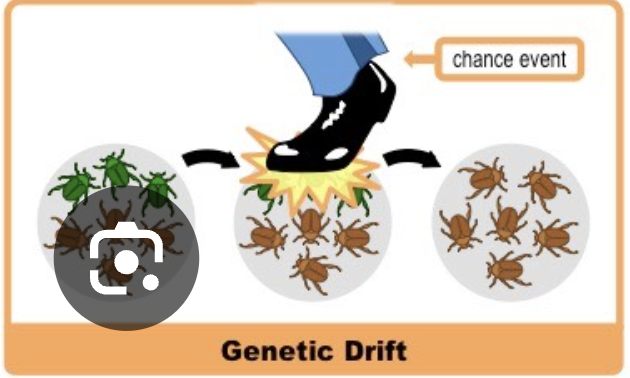
Genetic Drift
Random change in allele frequencies due to chance (more impactful in small populations)
It can lead to the loss of genetic diversity and may result in the fixation of harmful alleles.
Ex) A wildlife kills 90% of a beetle population by chance, altering allele frequencies
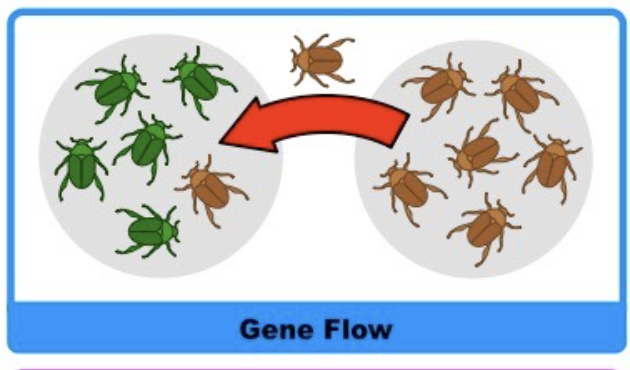
Gene Flow
The transfer of alleles or genetic material between populations through migration or dispersal, which can increase genetic diversity and reduce differences between populations.
ex) pollen from one plan population blows to another, introducing new alleles
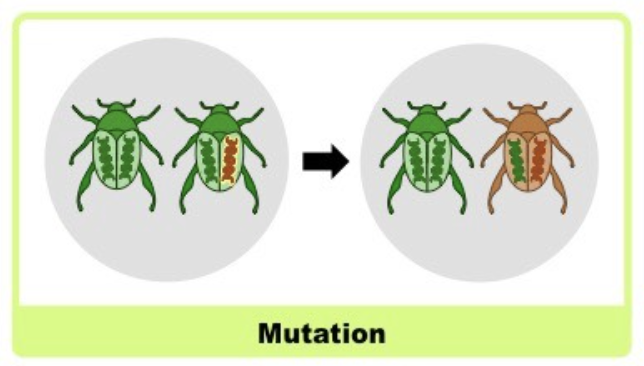
Mutation
A change in the DNA sequence that can lead to new alleles and variations within a population. Mutations can be caused by errors during DNA replication or environmental factors.
Ex) a mutation creates insecticide resistance in mosquitos
Non-random mating (subtype: intra and intersexual selection)
Mate selection based on traits (alters genotype frequencies)
Intrasexual Selection (Subtype for Non-random Mating)
Individuals of the same sex compete for mating opportunities with individuals of the opposite sex
Ex) male deer fighting for access to females
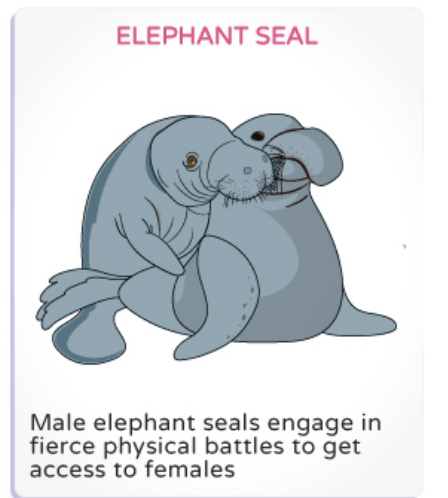
Intersexual Selection (Subtype for Non-random Mating)
individuals of one gender (typically females) choose mates based on desirable traits, influencing the mating success of individuals.
Ex) colorful plumage in peacocks
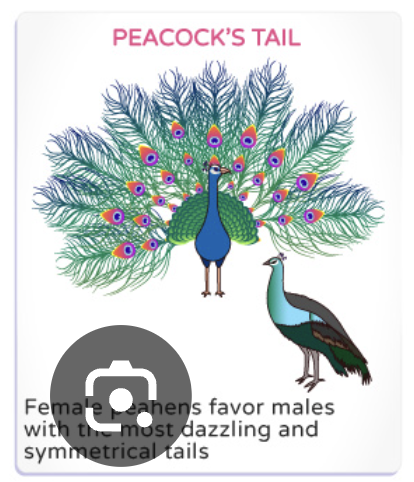
Natural Selection
The process in which organisms better adapted to their environment tend to survive and produce more offspring, driving evolution.
Directional Selection
Stabilizing Selection
Disruptive Selection
Balancing Selection
Directional Selection
Favors one extreme phenotype casuing population to change in one direction
Genetic variation is reduced
Ex) large beak size of finches during drought
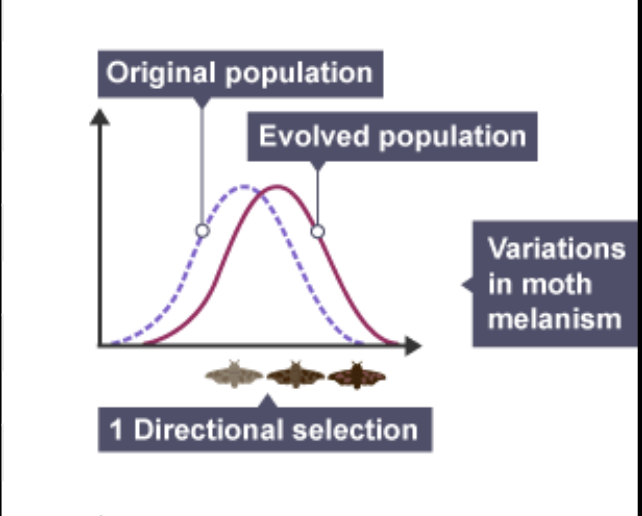
Stabilizing Selection
Favors intermediate traits near the middle of the range
Genetic variation is reduced
Ex) medium-weight human babies during birth
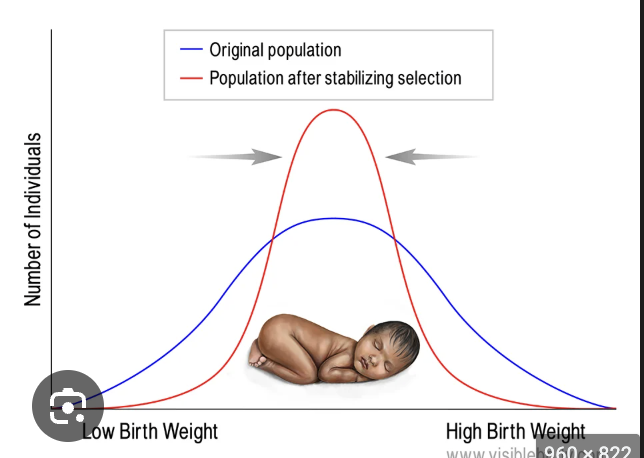
Disruptive Selection
Favors both extremes phenotypes at both ends
Genetic variation is increased
Ex) black/white moths in polluted forest
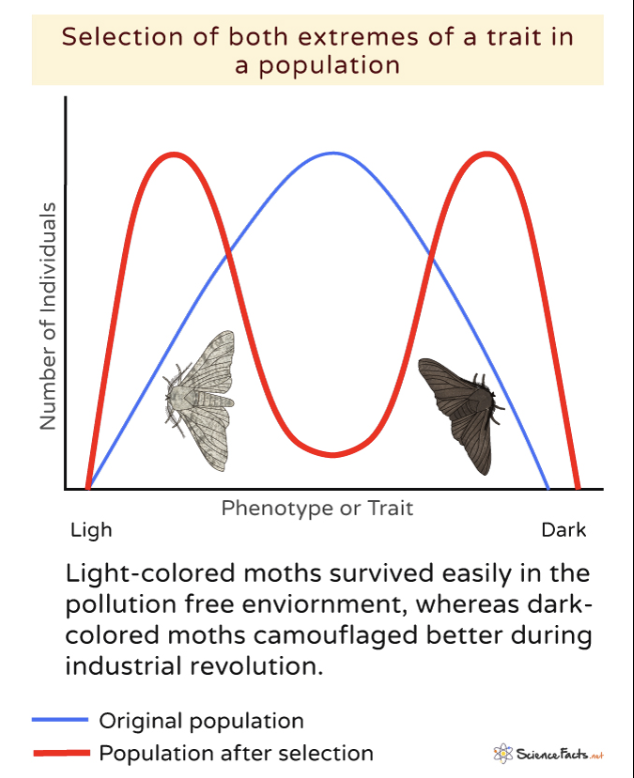
Balancing Selection
Maintains multiple alleles or no single phenotype is favored
Genetic variation is maintained
Ex) sickle-cell heterzygote
Founder Effect (Genetic Drift Subtypes)
Small group breaks off to form a new genetically limited population
Bottleneck Effect (Genetic Drift Subtypes)
Population size is drastically reduced by a random event (eg. earthquake or flood)
Ex) Northern elephant seals lost genetic diversity due to 19th century hunting
Pre-zygotic Isolation (Speciation & Reproductive Isolation)
Barriers preventing mating/fertilization
Ex)
Habitat Isolation
Temporal Isolation
Behavioral Isolation
Habitat Isolation
Species live in different areas and hardly encounter each other, preventing in breading
Temporal Isolation
Two species are unable to interbreed because they reproduce at different times, either during the day, season, or even different years.
Ex) one breeds early spring the other in late spring
Behavioral Isolation
A type of reproductive isolation where differences in mating rituals, such as courtship songs or dances, prevent interbreeding between different species
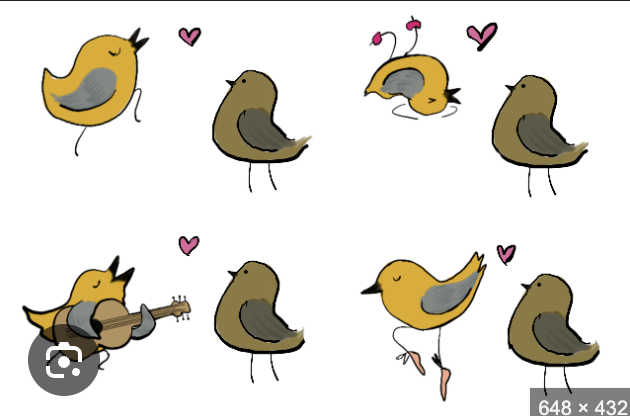
Post-zygotic Isolation (Speciation & Reproductive Isolation)
after a zygote is formed, there are mechanisms that hinder reproduction or a hybrid offsprings, through hybrid inability and sterility (Ex. tadpoles from into a frog but die before being mature / mule come from a horse and donkey but cannot reproduce )
Hybrid Inviability
Embryos die or offspring failing to develop into healthy fertile animals (limits gene flow)
Hybrid Sterility
Offspring cannot reproduce or unable to produce viable gametes (sperm or eggs).
Ex) cannot reproduce like mules (donkeys and horses offspring)
Allopatric speciation
processes where a new species arise die to geographic isolation, preventing gene flow between populations
Dispersal (Allopatric Speciation)
Group migrate (darwins finches to galapogos)
Vicariance (Allopatric Speciation)
Barrier splits population (river formation)
Sympatric Speciation
Speciation without geographic isolation
Polyploidy (Sympatric Speciation)
Genome duplication (eg. wheat or cotton)
Hybridization (Sympatric Speciation)
Hybrids become a new species through fertilization (eg. heliconius butterflies )
Hardy-Weinburg Equilibrium
states that allele and genotype frequencies in a population will remain constant from generation to generation unless disturbed by evolutionary forces (mutation, selection, drift, gene flow, or non-random mating)
No mutations → No new alleles arise.
No natural selection → All genotypes have equal fitness.
No genetic drift → Population is infinitely large (no random changes).
No gene flow → No migration in or out.
Random mating → No sexual selection or inbreeding.
Allele frequencies:
pp = frequency of dominant allele (A)
qq = frequency of recessive allele (*a*)
Rule: p+q=1p+q=1
Genotype frequencies:
p2p2 = frequency of AA (homozygous dominant)
2pq2pq = frequency of Aa (heterozygous)
q2q2 = frequency of aa (homozygous recessive)
Rule: p2+2pq+q2=1p2+2pq+q2=1
Transitional Feature
an intermediate trait between older and younger species
Vestigial Traits
reduced/ incompletely developed trait with no/reduced function but similar to ancestral traits (ex tailbone in humans)
Phylogeny
Diagrams the evolution of different species from their ancestors
LUCA (Last Universal Common Ancestor)
An organism that all of modern life decended from
Cladograms
shows branching order- branch lengths are meaningless
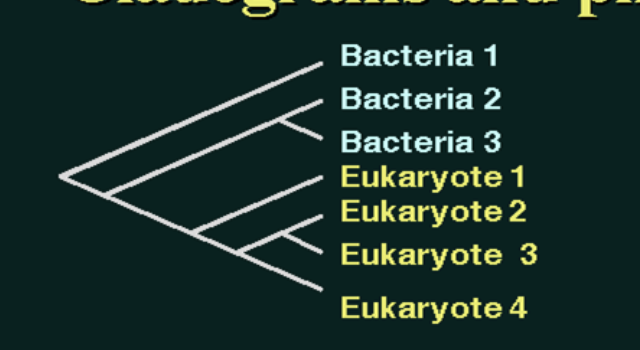
Phylograms
shows branch order and branch lengths

homology
similarity among organisms of different species due to shared ancestry (ex. fossils)
Trade off
inescapable compromise between two traits that means you cannot have it all (you have to choose which one is more important)
(Ex. turtle shells provide protection but are burdensome when moving)
Darwins four postulates
Population variation: variation exist among individual organism that make a population
Heritable traits: Some of the traits are passes onto offspring (heritable)
Survival & reproduction success are variable
Survival isn’t random: the subset of individuals that survive best and produce the most offsprings is not a random sample of the population
Sympatry
same location
Sympatric speciation
speciation that occurs among populations within the same geographic area
No geographic isolation
sympatric individuals live in the same geographic area
(random mating among individuals in the population)
Genetic isolation
begins to occur when mating becomes increasingly nonrandom
non random mating among individuals in the population
Genetic divergence
occurs as mutation, genetic drift, and selection increases the differences between populations over time
Sympatric speciation can be initiated by two types of events:
External events (outside)
Disruptive selection based on different ecological niches or mate preferences
Internal events (inside)
chromosomal mutations
Polyploidy
condition of possessing more than two complete sets of chromosomes (caused by a massive error in meiosis or mitosis)
Two types of polyploidy
Autopolyploid and alloployploid
Autopolyploid
Individuals produce when a mutation results in a doubling of the chromosome number
chromosomes are all from the same species
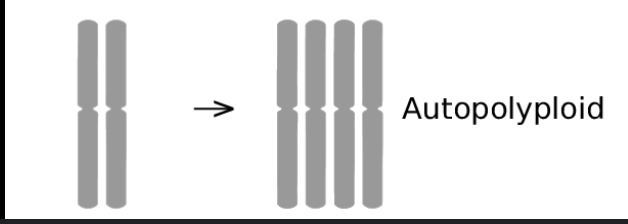
Alloployploid
individuals are created when parents of different species mate and an error in mitosis occur a